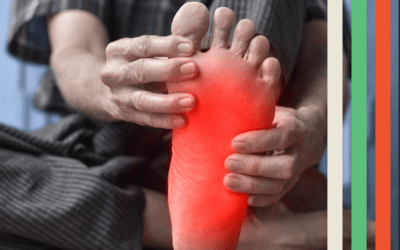Achilles Ruptures on the Rise
Achilles ruptures have become a growing concern in the world of sports, with an increasing number of athletes falling victim to this debilitating injury. As a coach deeply involved in training and rehabbing individuals, I’ve had firsthand experience helping a professional football player recover from a full Achilles rupture. This journey has sparked a deeper investigation into the factors contributing to these injuries, particularly the role of turf conditions and other risk factors. In this blog, we’ll explore the rising trend of Achilles ruptures, examine potential causes, and discuss what strength and conditioning coaches can do to mitigate these risks.
For a blog on achilles tendinopathy, which is a different but related concern, we’ve fully covered that in a separate post “Why won’t my achilles pain go away? Ideas for tackling chronic achilles pain”.
After reading this blog, if you still need help with your training, injury rehab, or performance, reach out to us at Vital Strength Physiology HERE.
For the last year or so I’ve been more invested than the usual in full achilles ruptures. Not only because my day job involves training and rehabbing individuals in which I’m interested in keeping less- or un-injured….. but also because I’ve been helping a professional football player come back from his full achilles rupture and surgery since last fall after his surgery last June. Here’s a quick highlight reel on how that has been going.
One sprint coach I follow has been personally tracking achilles tear incidences in the NFL, and I don’t know of any public records by the CFL or NFL that track such injuries, so this data is all I can find:

What stands out to me, is the trend in achilles ruptures are increasing in
- year totals (17 in 2020; 16 in 2021; 18 in 2022; 22 in 2023)
- the off-season and pre-season
- the regular season
…but they don’t seem to be increasing in the playoffs. It’s almost as if making it through the season’s intended training volume UN-INJURED provides some protection from those types of serious injuries by the time the playoffs arrive. HOW you remain un-injured is less clear. The higher injury incidence in the regular season might indicate a significant increase in training volume leading up to it is what is putting players at risk.
I couldn’t find any data like this on CFL players, but if you know of where to find that, please do reach out and let me know – I’d love to have a look.
What I do know is that already this week, the CFL’s Calgary Stampeders have had 2 athletes suffer achilles ruptures – one yesterday and one last week (public knowledge) in their Pre-season. That is just one team in Canada, in the 2-3 week lead up to the Regular Season, so our stats aren’t that dissimilar to those in the NFL if you messily extrapolate.
So, as strength and conditioning coaches, what do we do with this information? As individuals wanting to run, sprint, and push your bodies, what do YOU do with this information?
Many on social media want to say that they have the answer when they have never even worked through someone’s full return to play for an achilles rupture. It’s all speculation until your own athlete, who you’ve worked so hard to strengthen up to their strongest ever, who has all asymmetries down, whose confidence is soaring……. hurts themselves. More on this next week.
One way we can try to decrease the incidence of these injuries is knowing their risk factors. Some of the main risk factors for achilles ruptures boil down to (from THIS article):
- Chronic tendon inflammation and Achilles’ tendinopathy – which is often left un-checked because these problems can exist with no pain – like the CFL athlete who we’re now rehabbing who had no pain or symptoms before he fully tore his achilles last spring. If you DO have pain though, tendinopathy is likely present (get assessed) and should be monitored.
- Spring season is a risk factor. The steep increase in loading that often pairs with spring training camps have big influences on these athletes. For non-athletes alike, when the snow melts and the sun comes out, the concomitant steep rise in training that often takes place could be at least partly to blame.
- Excess glucose in the blood – which makes sense after I learned from the Dr. Keith Baar interview on the Jacked Athlete podcast that excess circulating glucose creates more cross-links in the tendon which stiffens the tendon. Similarly, when you’re inactive, if you’re eating the same as when you were active, you’ll have poorer blood glucose control and increase the stiffness of the tendon. This brittleness sets the tendon up to be more likely to rupture. So, diet plays a role (along with supplementation that helps tendons that I’ve talked about in more depth in another newsletter HERE)
- Previous musculoskeletal injury. For example, it could be that you change your loading patterns to favor the same side or other side of the injury, which sets you up for asymmetries that overload certain areas more than others
- Regular participation in athletic activity – because yup, being active especially at elite levels, can be risky! The caveat here is that if you have a period of inactivity – we decrease the turnover of collagen in our tendons and we have a smaller/weaker tendon over time – which is also less robust and more likely to get injured.
Lastly – though the article didn’t mention this specifically – I do believe that biomechanics also play a role in increasing or decreasing risk.
We make the mistake of letting our egos as strength coaches take over, saying that OUR PROGRAMS would be the better ones than the ones where the athletes get injured. The truth is, there are SO many factors that play into these devastating injuries. Just wanting to vent today and share some of the research I’ve been looking into as this sorrow news of more tendon tears has hit close to home this week.
Let us know your thoughts.

More About The Author
Carla Robbins, Owner of Vital Strength and Physiology Inc
Carla’s journey into the world of endurance training, strength and conditioning, and exercise physiology began with her Undergraduate Degree in Exercise Physiology at the University of Calgary and continued into her graduation with a Master’s in Exercise Physiology in 2016. Between working for the Canadian Sports Institute to the creation of her company Vital Strength and Physiology Inc, Carla is driven by a desire to find better ways to address complex cases in professional and everyday athletes and individuals.



